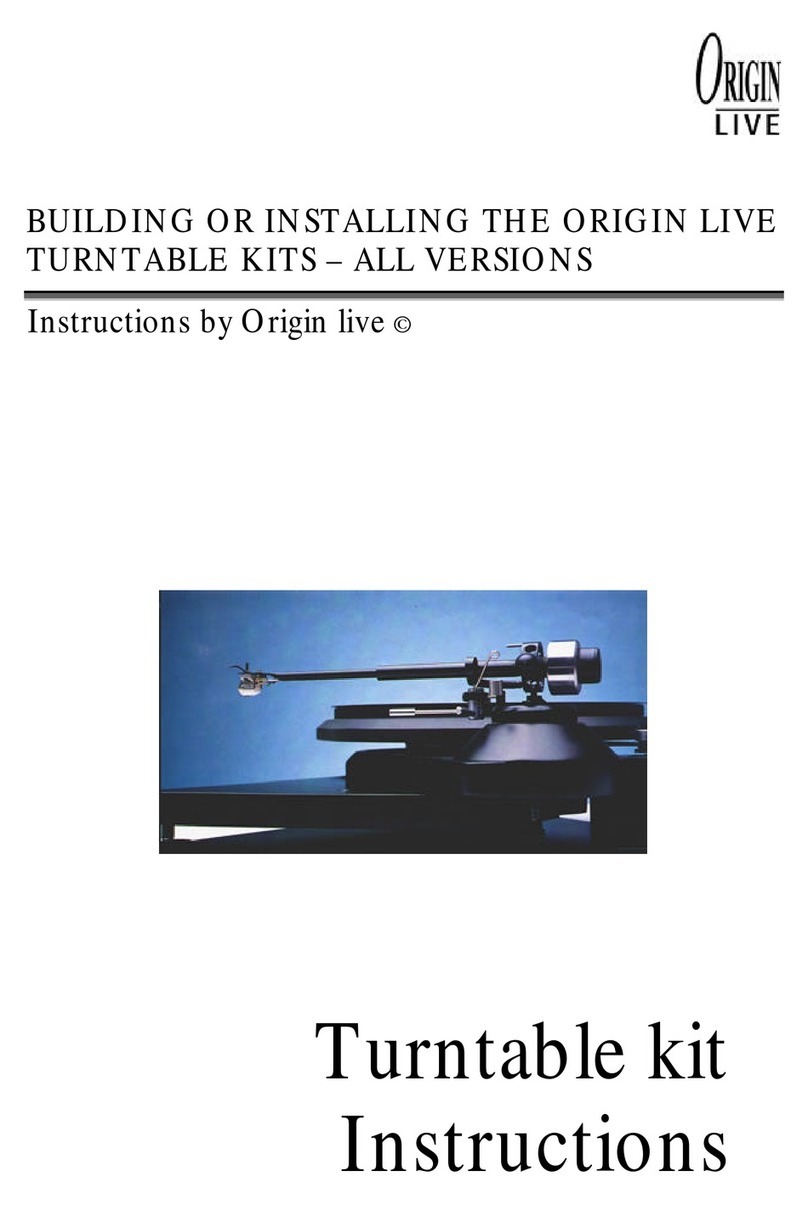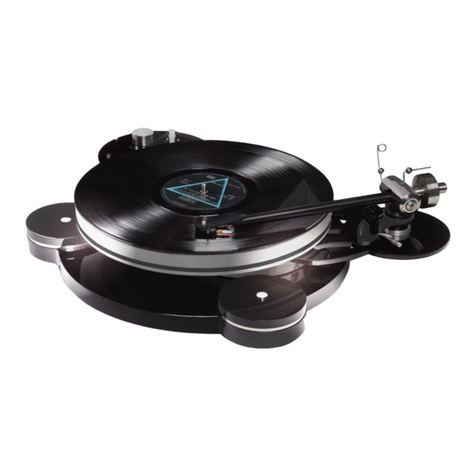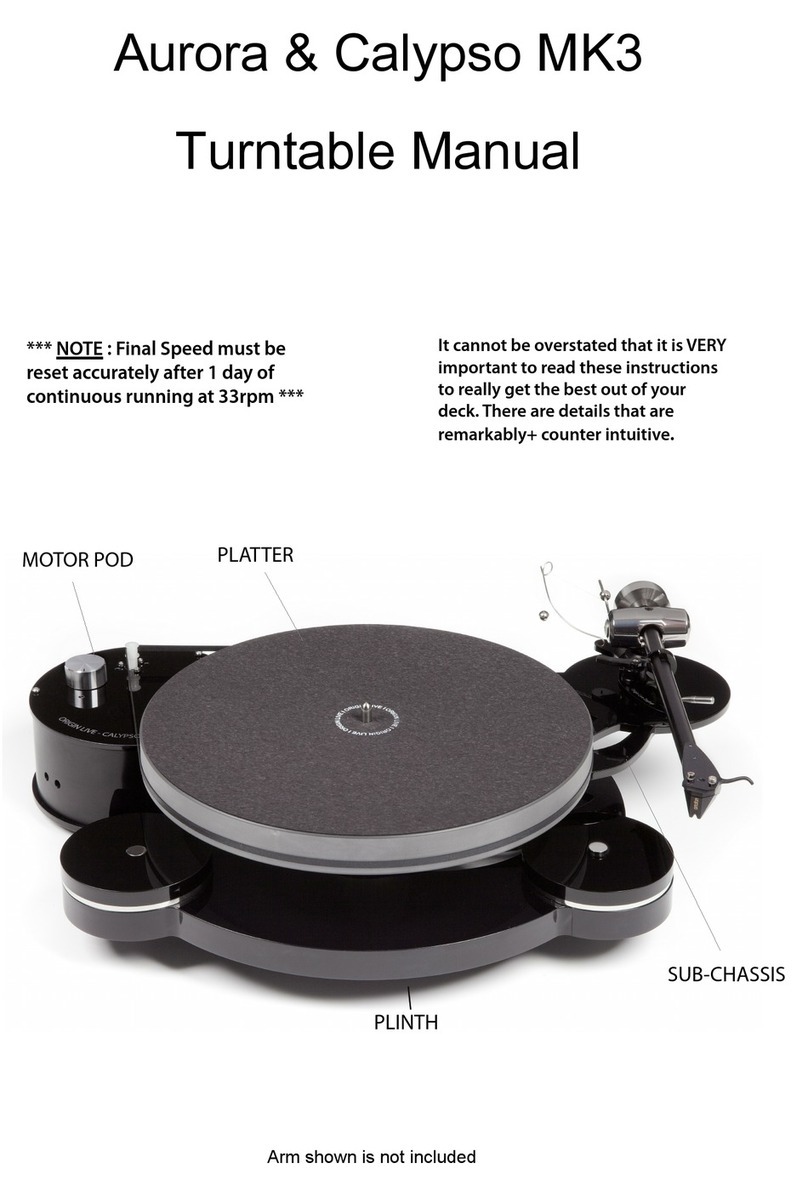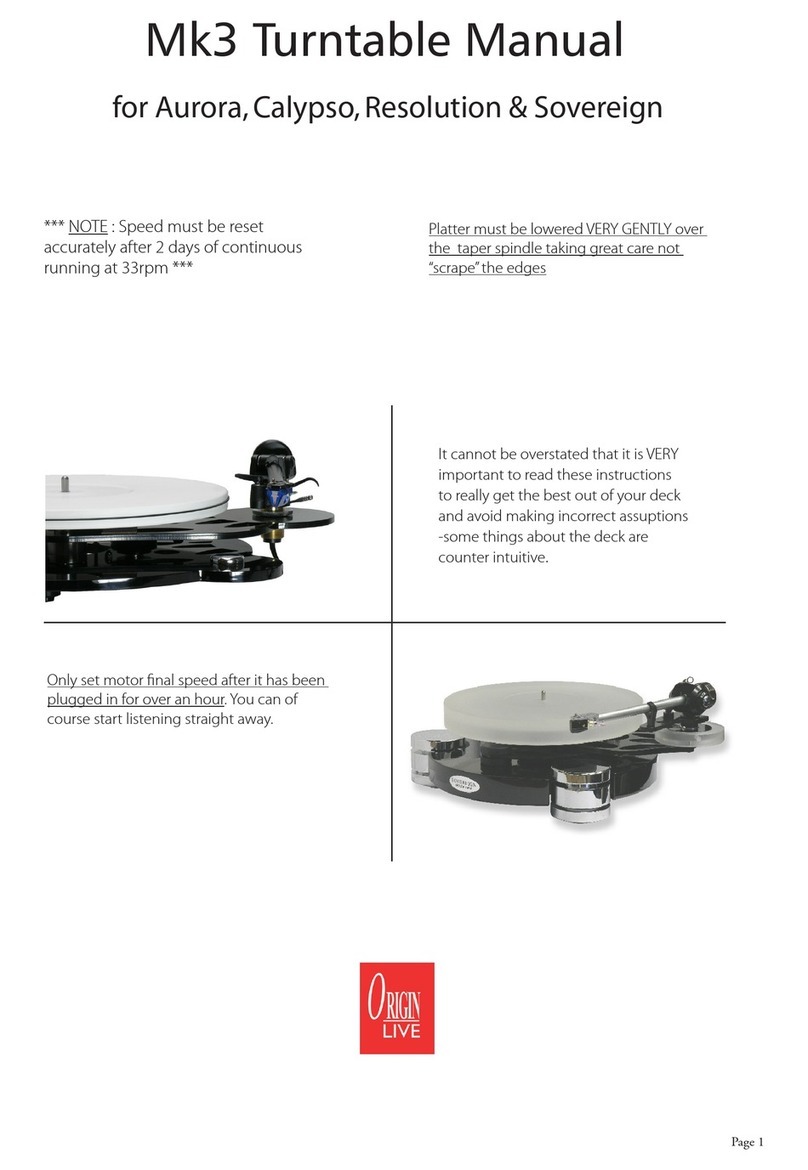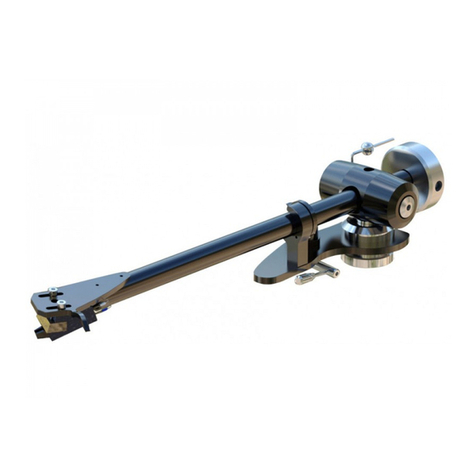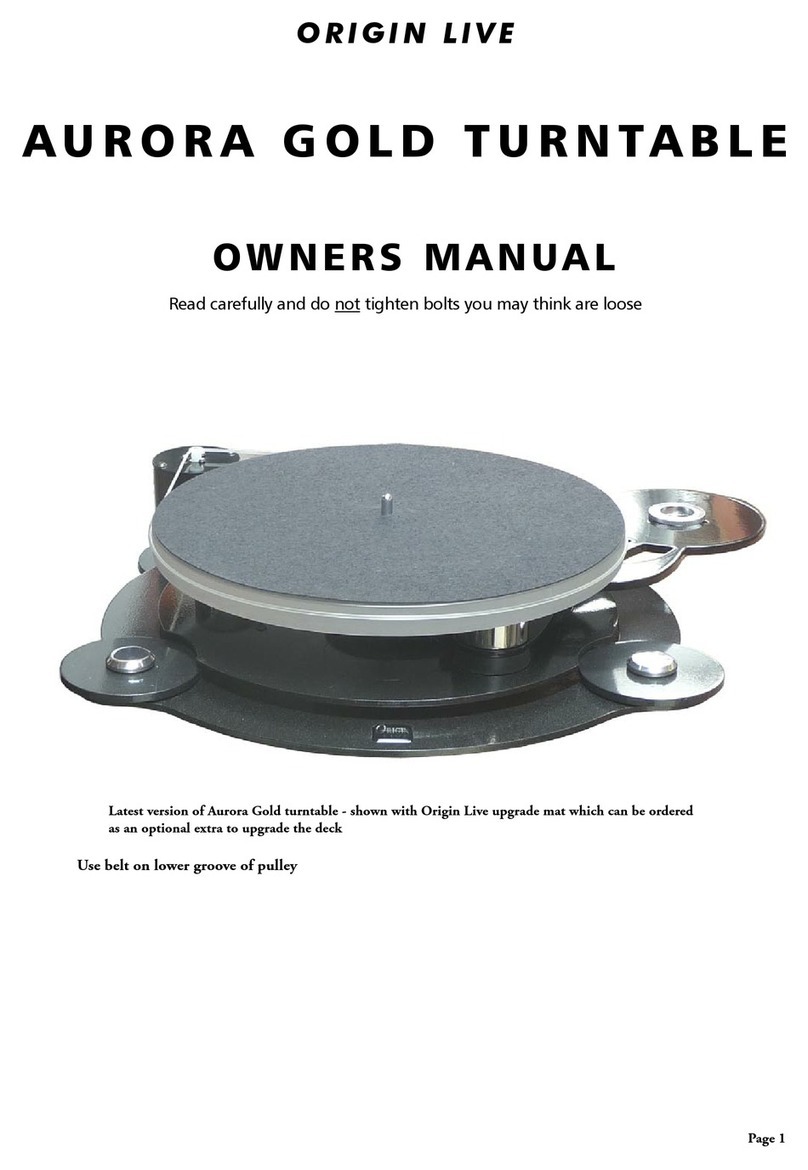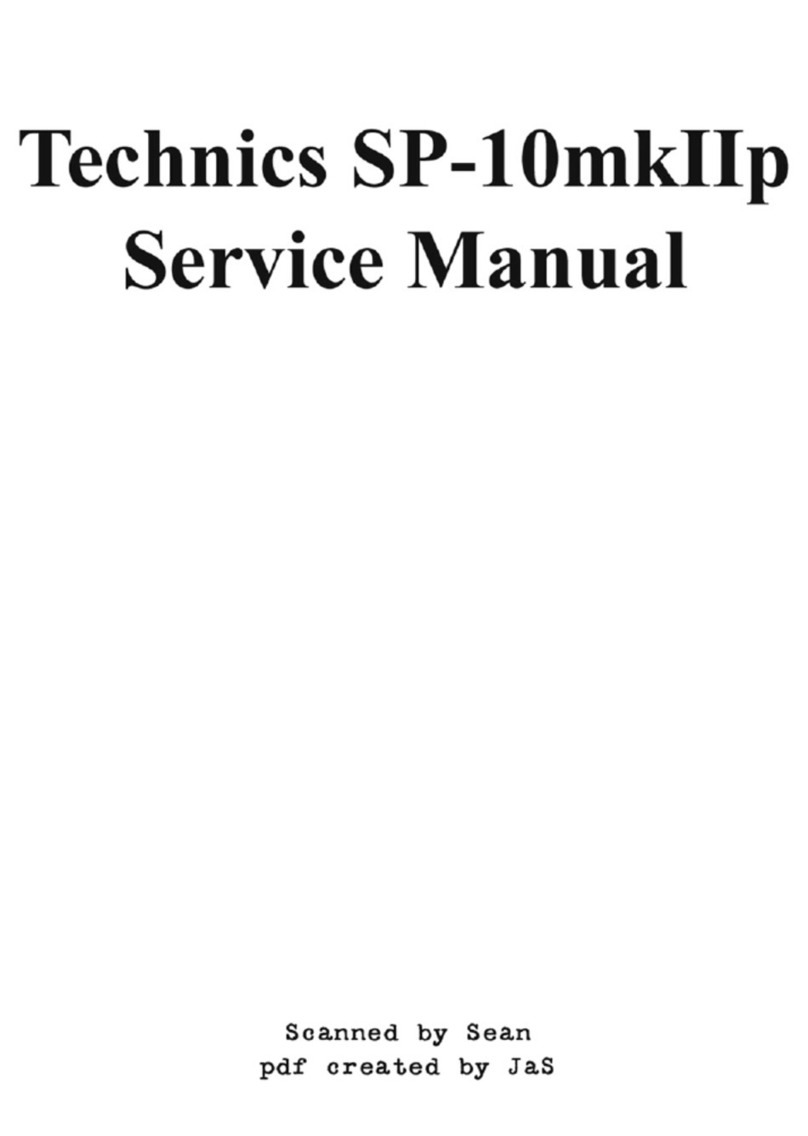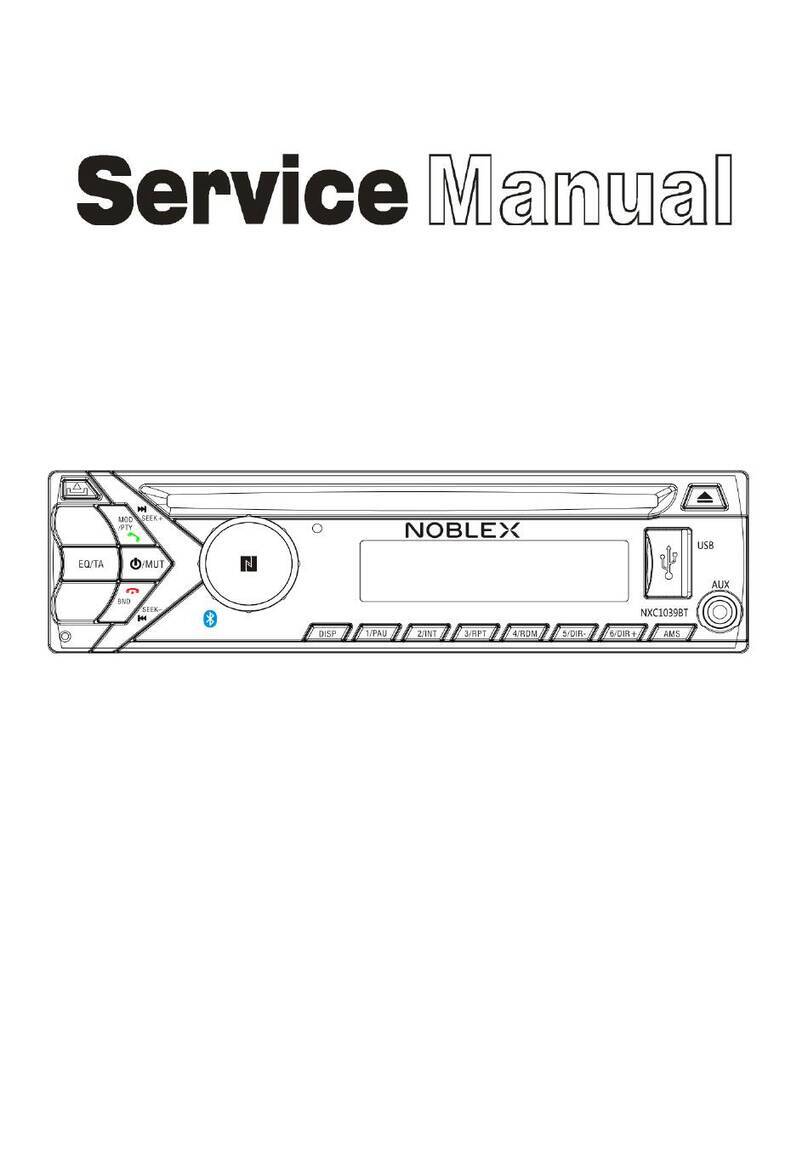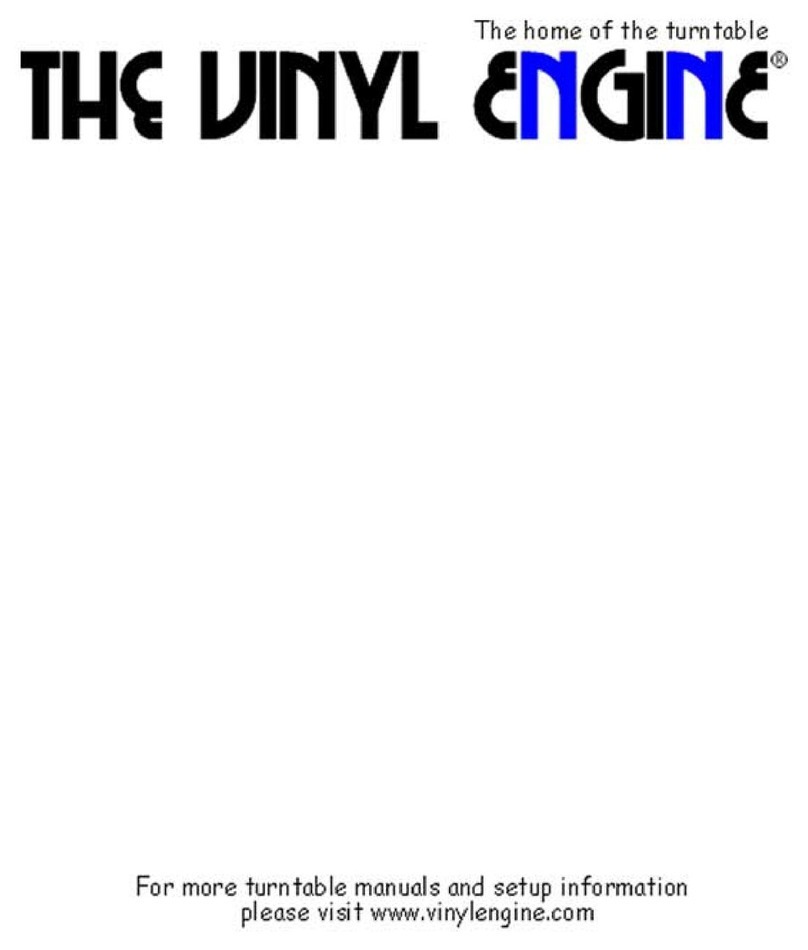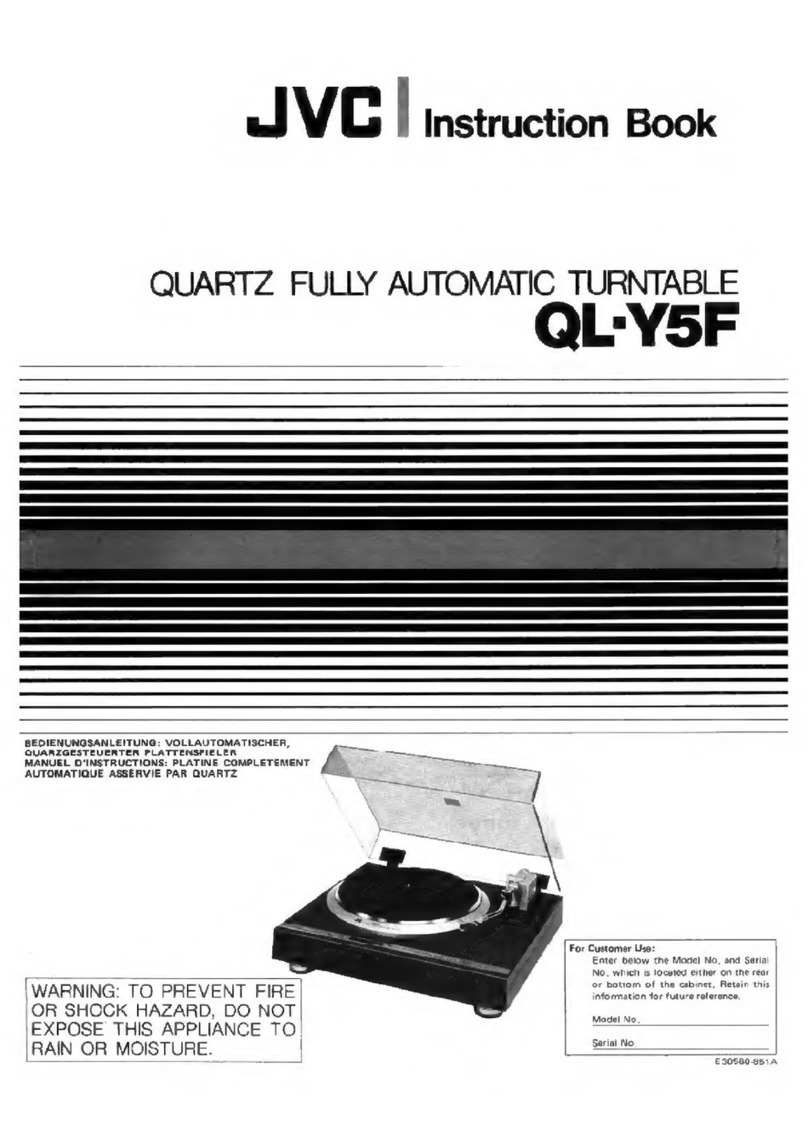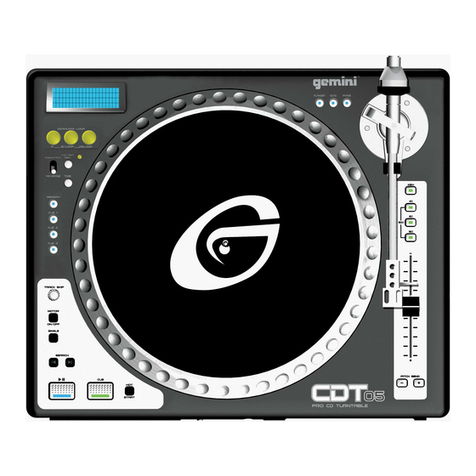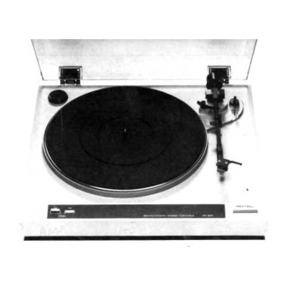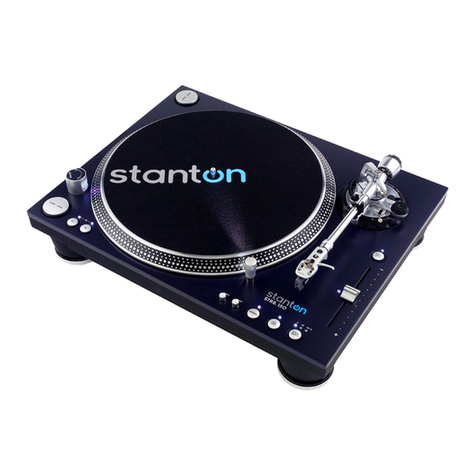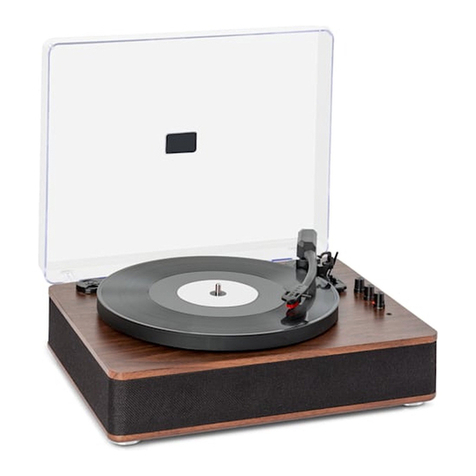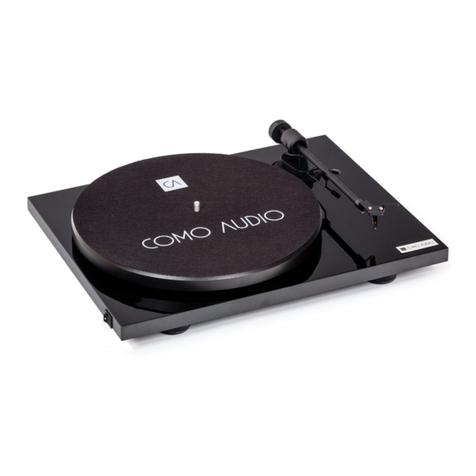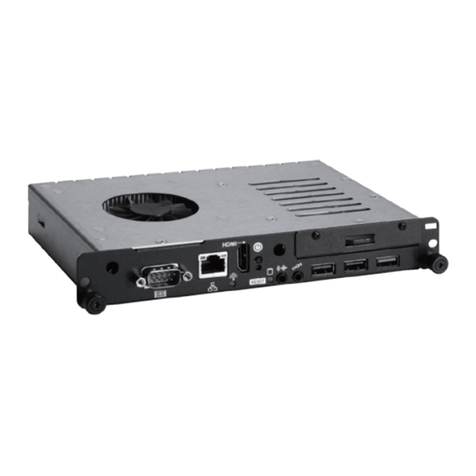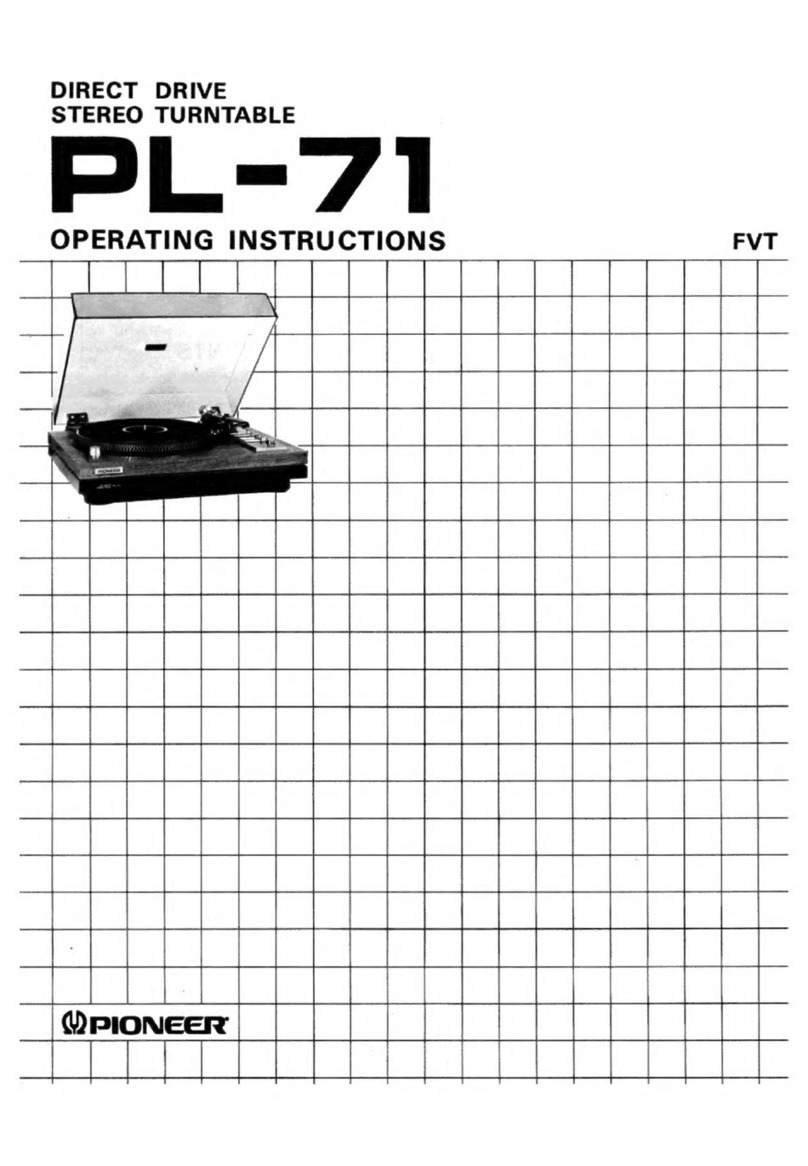are audible they are generally of a relatively low
order, however tracking force and VTA in particular
are worth fine tuning should you feel anything is
lacking. If things seem complicated we would
encourage you not to be put off as it all becomes
clear once you get started.
Before fine tuning the set up as described below you
should allow the cartridge to “run in” properly - at
least 40 hours for some cartridges.
I M P O R TA N C E O F S E T U P
Hi-Fi cartridges travel like a bobsleigh through the
groove of a record, even though the groove is only a
few thousandths of an inch wide. You hear groove
displacements of the order of a few millionths of an
inch. (That’s like splitting a hair into one thousand
pieces.) Every motion or vibration allowed at this
level can be heard enormously amplified through
your speakers. For this reason it is good to set up the
turntable and arm correctly so that the audio cartridge
can do it’s job properly. For instance a turntable out
of level can produce side forces on the pickup
cartridge tip that will wear it more on one side than
the other. It also has a slightly degrading effect on
the wear of your records.
LEVELNESS
hen a turntable goes out of level, the platter bearing
performance and the arm’s dynamics, specifically
anti-skate, are negatively affected. So be sure your
turntable platter and tonearm mounting board are
level - use a spirit level. If the platter is out of level,
first adjust the surface that the deck stands on. The
suspension (in the case of a suspended sub-chassis
design) may also need levelling if it has subsided
over time. If the arm board is not level (which means
the arm pivot is not vertical), either return it to your
dealer for repair or re-level it yourself by shimming
between the mounting board and it’s support.
HI-FI CAR RIDGES ALIGNMEN
Alignment for hi-fi cartridges needs to be optimised
in three different planes. However, it cannot be
perfect in all three planes, so it must be optimised for
an overall best balance or compromise. The final
authority should always be your ears and preferably
over an extended period of listening. Bear in mind
that each record is cut slightly differently. Here again,
optimise for an overall balance of good sound over a
wide range of records. The three alignment planes are
as follows. (Please note that it is the stylus, not the
cartridge that is being aligned.)
Lateral tracking angle
Viewed from above, the cartridge arcing movement
across the record must maintain the stylus in the same
relation to the groove as that of the cutting stylus’s
straight-line tracking; this is Lateral Tracking Angle
or Tangency. Apart from linear tracking arms this is
always a matter of the best compromise.
Azimuth
Viewed from head on, the stylus must be
perpendicular in the groove so as not to favour one
groove wall, and therefore one channel, over the
other wall/channel; this is Azimuth.
Vertical tracking angle (V A)
Viewed from the side, the stylus must sit correctly in
the groove, at the same angle as the original cutter;
this is Vertical Tracking/Stylus Rake Angle. (VTA,
however, varies from record to record due to their
varying thicknesses. Therefore, this alignment must
be set by ear, even more than is the case with the
other adjustments).
HI-FI CAR RIDGE ALIGNING OOLS
Tools required are an alignment gauge, a ruler, a
tracking force gauge, a FLAT record, a screwdriver or
Allen keys of the right size (usually 2mm), a good
light may also be helpful. Small needle-nose pliers
and a magnifying glass all help. It also helps to have
the hi-fi news test record. Treat the arm with care as
some parts are fragile. To this end ensure that
tightening of any bolts is carried out gently and
without causing undue strain.
Tonearm wiring uses a standard colour code for
channel and polarity identification: hite = L Hot,
Blue = L Ground, Red = R Hot, and Green = R
Ground. If the cartridge pins aren’t color-coded the
same way, they will have letter identifications next to
them. Make sure that the arm’s wires, wire clips, and
solder joints are in very good condition. At minimum,
clean the contact between cartridge pins and wire
clips by removing and replacing each clip. Holding
the clips with needle-nose pliers can make this easier,
but be careful that you don’t strain the wires where
they join the clip. Check the clips for a proper fit on
the cartridge pins, and adjust them if necessary.
“Proper” means snug but not tight. To check clip size,
hold the cartridge tail-up close to the head wires,
grasp a clip firmly right behind its tubular part with
the tweezers, line it up with the cartridge pin, and
press. If it does not slide on with moderate force, the
clip needs opening-up. If it slides on easily but flops
around when attached, it needs tightening. Re-sizing
is the operation most likely to detach a clip. The trick
is to avoid bending the wire at its attachment point or
putting too much tension on it. To avoid either,
always hold the clip with its wire slightly slack-
looped behind it while adjusting. For opening a clip,
hold it firmly with the tweezers or needle-noses, right
behind its tubular section, and press the tip of the

